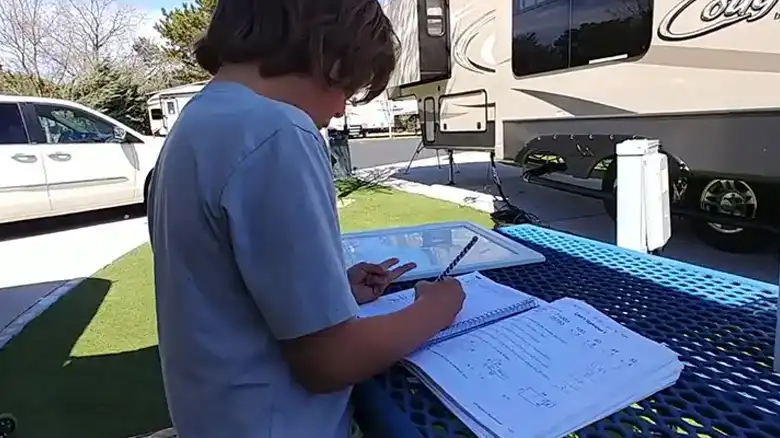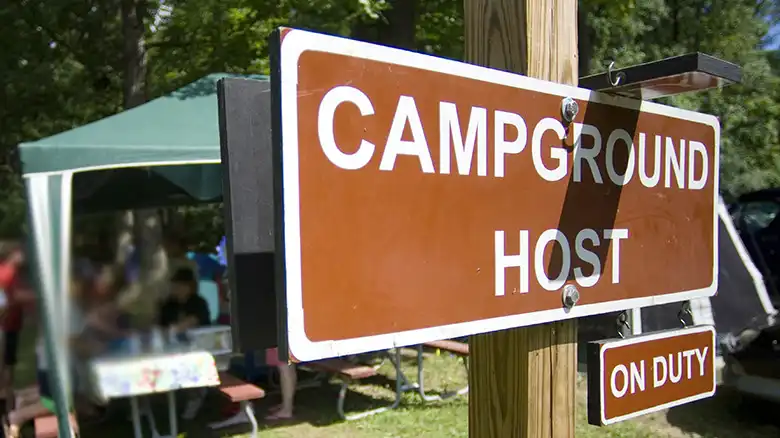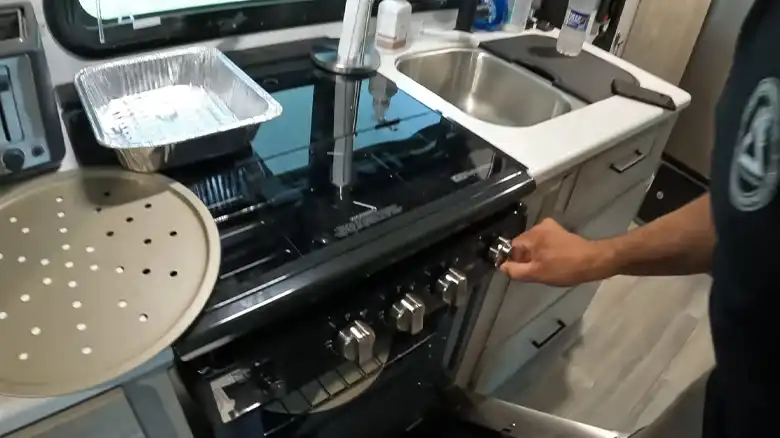Homeschooling while traveling full-time in an RV can be an amazing adventure for the whole family. With constantly changing scenery and boundless opportunities for exploration, there is huge potential for active, hands-on learning tailored specifically to your child’s interests and abilities. However, the freedom of the open road comes with the responsibility of ensuring your child receives a well-rounded education. When choosing educational activities for RV-schooled kids, it is essential to consider your child’s learning style and current skill levels across various subjects. After pinpointing areas of strength and areas needing improvement, you can then select immersive learning experiences from the bounty of possibilities available on the go.

Understanding Your Child’s Learning Style and Skills
Just as every child has a unique personality, they also have a preferred way of absorbing, processing and retaining new information. Determining whether your child skews more towards visual, auditory, or kinesthetic learning allows you to cater activities and teaching methods to their learning style. Additionally, periodically assessing current skills gives you insight into subjects requiring more attention and practice.
Visual learners absorb information best through images, demonstrations, diagrams, and symbolic representations. They appreciate visually stimulating educational activities such as:
- Scenic tours of nature preserves, architectural sites, or art museums
- Field trips to interactive science centers or historical reenactments
- Following illustrated step-by-step tutorials for hands-on projects
Auditory learners are most engaged through listening, verbal discussion, and oral explanation. Useful activities for auditory learners include:
- Listening to audiobooks, lectures, podcasts, and oral histories
- Engaging in debates, presentations, and discussion groups
- Learning musical instruments through listening and repetition
Kinesthetic learners prefer a hands-on, physically interactive approach. Help kinesthetic learners thrive through:
- Outdoor exploration of plants, animals, geography, and astronomy
- Building models, contraptions, or sculptures with tactile materials
- Performing science experiments using their bodies and senses
No matter your child’s specialized learning style, aim to regularly assess comprehension and progress across core academic subjects. Use grade-level checklists aligned with national homeschooling standards to pinpoint skills gaps needing attention. Address any weak areas through additional focused activities tailored to their unique learning preferences.
Exploring Outdoor Learning Opportunities
Few schooling formats can compete with the incredible living classroom provided by the natural world. A moving RV classroom gives you access to a myriad of breathtaking parks, landscapes, ecosystems, and environmental phenomena as fertile ground for stimulating, multi-sensory educational adventures.
Go for Hikes and Nature Walks to Learn About Plants, Animals, and Ecosystems
Trekking through regional wildlife preserves exposes your child to diverse botanical and zoological specimens in their native habitats. Have them keep a nature journal with observational drawings, specimen rubbings, notes about behaviors seen, and questions inspired. Identify unknown plants and animals using field guides and reference books. Discuss topics like adaptation, evolution, biodiversity, ecological niches, and the interconnectivity of ecosystem components.
Hike and Nature Walks
From alpine meadows to saguaro-studded deserts, hiking offers non-stop panoramic learning. Have your child use trail maps to practice map-reading skills and use landmarks to pinpoint locations. Observe and discuss geological formations and processes that created regional topographical features. Compare climate, terrain, flora, and fauna in varied hiking locations.
Visit National Parks and Monuments to Learn About History, Geology, and Environmental Science
RV travel grants you access to one-of-a-kind landscapes and historic sites commemorating pivotal moments in America’s past. Discuss the geological phenomena behind unusual rock formations, glaciers, volcanoes, geysers, and fossils. Learn about indigenous cultures who once called these lands home. Read about influential scientists and naturalists who conducted pioneering environmental research in the parks. Download the National Parks Passport book and have your child stamp each entry, solve junior ranger puzzles, and participate in educational programming.
Go Camping and Stargazing to Learn About Astronomy and Constellations
Pitch your tent under the stars and let your child stay up late identifying constellations using star charts, planetarium apps, and telescopes. Discuss the mythology behind famous constellations. Have them keep a night sky observation journal detailing phases of the moon, visible planets, meteors, satellites, and the Milky Way’s movement throughout the seasons. Use physics principles to understand concepts like solar systems, galaxies, light years, and more.
Camping and Stargazing
Pass long evenings around the campfire telling stories, playing music, cooking hearty meals, and bonding as a family. Build wilderness survival skills through activities like fire-building, whittling, fishing, and orienteering. Allow ample unstructured playtime for imaginative games and exploration.
Engage in Creative Pursuits
Creativity is crucial for adaptable thinking, problem-solving, emotional expression, and innovation. While math and sciences target the logical left brain, engaging young minds in artistic and musical endeavors activates the creative right brain. Designate storage areas or fold-out workstations to set up a rotating array of supplies for open-ended art, craft, music, writing, and performing arts activities.
Creating an Art Station in Your RV for Creativity
Stock a tote or bin with sketchpads, canvases, paint, colored pencils, modeling clay, sculpting tools, and more. Allow your child free reign to follow their inspiration and interests. Frame finished pieces to decorate your vehicle and display their evolving talents. Utilize how-to-draw books and online tutorials to teach techniques. Research famous artists and movements, replicate masterpieces, and visit galleries featuring original works.
Art Station in RV
Foster a love for visual arts through exposure to public artwork like murals, statues, architecture, and functional pieces like bridges and carved signage encountered on your travels. Carry a camera for photographic documentation of regional aesthetic flavors.
Make Music Together by Playing Instruments, Singing, or Composing Songs
Incorporate a travel music center into your RV with a range of instruments like harmonicas, tambourines, wooden frogs, small keyboards, maracas, tone blocks, slide whistles, and more. Encourage individual exploration of sounds and rhythms. Designate practice times for any instruments your child takes formal lessons on either virtually or in person. Put on lively music and have family dance parties. Stage talent show performances of original songs, choreographed dances, piano concertos, and comedic musical skits.
Create Nature Crafts Using Leaves, Sticks, and Other Natural Materials
Make the most of the natural bounty found on hikes and campouts by collecting items like feathers, pine cones, seed pods, pretty leaves, flowers, rocks, sticks, and shells—store craft materials in sorted containers and ziplock bags. Later, use glue, string, wire, paint, and other embellishments to create one-of-a-kind nature art like wreaths, sculptures, prints, pressed flower cards, decorative signs, mandala tracings, and more. Display final crafty creations in your living space as souvenirs symbolizing memorable locales and experiences.
Cooking and Baking: Fun Learning in the RV Kitchen
Beyond academic lessons, ensure your child builds independent living skills like cooking, nutrition, budgeting, time management, and household responsibilities. RV kitchens provide cozy spaces conducive to guided culinary experimentation and math-based measurement activities disguised as tasty fun.
Use Your RV’s Kitchen to Teach Your Child About Cooking and Baking
Have pre-readers follow pictorial recipes and older children take turns reading ingredients and instructions aloud. Demonstrate proper tool usage and technique, then have them take the lead in mixing, chopping, sautéing, baking, and more. Instill basics like reading recipes, planning menus, writing grocery lists based on budgets and sales flyers, comparing prices, measuring dry/liquid ingredients, using appliances, adapting for preferences, sourcing local specialties, cleaning up, composting waste, and balancing nutritious whole food groups.
Experiment with Different Recipes from Different Cultures
Enhance cultural geography and history lessons by preparing authentic ethnic dishes as you travel through areas with rich culinary heritage. Source ingredients from local ethnic grocers and discuss staple foods, customs, table manners, and conversation etiquette from various cultures now ubiquitous across America due to waves of immigration. Foster an appreciation for global flavors and traditions.
Have a Picnic Outdoors and Enjoy Your Homemade Creations
After concocting a portable feast, pack everything into a picnic basket or portable cooler along with a blanket and head out to an enticing natural spot to dine al fresco. From waylaying waterfronts to meadows dotted with wildflowers to red rock vistas, partaking in your movable feast against a beautiful backdrop fuses food with tactile place-based learning. These visceral memories last a lifetime.
Visit Museums and Cultural Attractions
While on-the-go schooling centers around immersive exploratory learning, dedicate time for focused cultural enrichment at museums, galleries, festivals, and other institutions housing coveted collections of art, artifacts, documents, recordings, and more. Prioritize attractions unique to the region, culturally significant, or relevant to current lesson plans.
Take Your Child to Museums, Art Galleries, and Historical Sites to Learn About Art, History, and Culture
Exposing developing minds to human artistic expression cultivates aesthetic appreciation, inspires curiosity about artists and patrons behind movements, and illuminates insights into historical context and societal issues captured on canvas or in sculptures. Likewise, walking the halls and grounds of pivotal estates, battlefields, and monumental architectural sites makes history come alive through place-based learning. Have them journal thoughts, sketch artifacts, and form connections between sites.
Attend Local Festivals and Events to Experience Different Cultures and Traditions
Partaking as an observer or active participant in parades, competitions, concerts, craft fairs, holiday celebrations, food festivals, and more immerses your child in living traditions and beliefs. Watch performances, try ethnic dishes, admire folk arts, listen to oral histories, and interact with community members to foster cultural exchange and demystify differences.
Visit Libraries and Bookstores to Read Books, Magazines, and Newspapers
Support intellectual curiosity and research skills by spending rainy travel days curled up reading books, periodicals, and newspapers. Have your child gather relevant materials to expand on lessons learned on tours or hikes. Encourage them to self-select reading materials catering to their interests too. Seek out quirky local bookstores featuring niche regional titles whenever possible.
Learning Through Play: Games and Activities for Education
While structured learning has its place, never underestimate the immense educational benefits of unstructured creative playtime. Games and open-ended toys build crucial skills from math and logic to fine motor control, imagination, communication skills, emotional intelligence, and more without it feeling like “learning”.
Play Educational Games That Teach Math, Science, and Language Arts
Incorporate educational board games, puzzles, building sets, and question-driven card games covering core academic subjects in a lively social format where learning occurs almost by stealth. Accommodate varied attention spans and energy levels by having quick, thought-provoking brain games on hand for any time inspiration strikes.
Use Puzzles, Building Blocks, and Other Manipulatives to Develop Fine Motor Skills and Problem-Solving Abilities
Provide a spectrum of toys for hands-on engineering feats and precision motor skill development. Think jigsaw puzzles, interlocking brick sets, model kits, educational robotic kits, art supplies, and more. Building projects from conception to completion reinforces sequencing, spatial relations, manual dexterity, planning skills, resilience, and satisfaction in a job well done.
Engage in Pretend Play and Role-Playing to Develop Creativity and Imagination
Imagination lays the groundwork for future innovation by encouraging curiosity, flexibility, resourcefulness, collaboration, and visionary perspectives. Provide costumes and props then step back allowing your child’s natural ingenuity to transform their play space into laboratories, theaters, royal courtrooms, submarines, bakeries, falcon mews, or whatever scene captures their unbound imagination that day. Participate when invited while taking cues from your child’s assumed roles and evolving storylines. Foster creativity without judgment wherever inspiration takes them.
Conclusion
when choosing educational activities for RV-schooled kids, focus on catering immersive learning adventures to support visual, auditory, and kinesthetic learning styles. Regularly assess academic strengths as well as skills needing reinforcement. Then utilize the incredible facilities the outdoors provide for stimulating place-based multi-sensory learning experiences balanced with indoor quiet times for reading, playing educational games, manipulating puzzles and building sets, and letting creativity unfurl. Take advantage of visiting regional cultural attractions like museums and festivals too. Blend child-directed discovery and play with structured lessons for a winning strategy in RV-based homeschooling. Feel free to share your favorite educational activities in the comments! Thanks for reading – now go explore!
Usual Questions You May Also Ask
- How do I figure out my child’s learning style?
Observe how your child best retains information – through seeing demonstrations, listening to verbal explanations, or hands-on doing. Also, note their behavioral tendencies and preferences. Use online checklists to help formally identify if they skew towards visual, auditory, or kinesthetic learning styles.
- What are indicators my child may need help in certain subjects?
Consult homeschooling grade-level guidelines to know what skills to assess across core subjects like reading, writing, math, science, history, and arts. Keep an eye out for frustration, avoidance behaviors, or lack of progress. Use age-appropriate testing curriculums to diagnose any lagging foundational skills that may be hindering subject comprehension.
- How much structure versus free play should there be?
Aim for a balance of pre-planned educational activities focused on lesson plan topics and open-ended unstructured playtime every day. Kids need both scheduled teaching times where new information is imparted as well as opportunities to freely reinforce new concepts, experiment, be creative, and lead their learning through play.
- How do I encourage creativity?
Expose them to arts, music, and culture for inspiration. Provide costumes, props, art supplies, and instruments then step back allowing imaginations to unfold without judgment. Foster curiosity through questioning, introduce scenarios with problems needing solutions, and validate seemingly silly ideas that could spark innovation.
- What types of toys best support learning through play?
Look for multi-purpose toys like puzzles, building block sets, costumes, educational robotic kits that teach programming logic, board games reinforcing reading, mathematical thinking and strategy, toys that can be used multiple ways, and art supplies. Open-ended toys spark more benefits than single-use toys or media-based entertainment.


